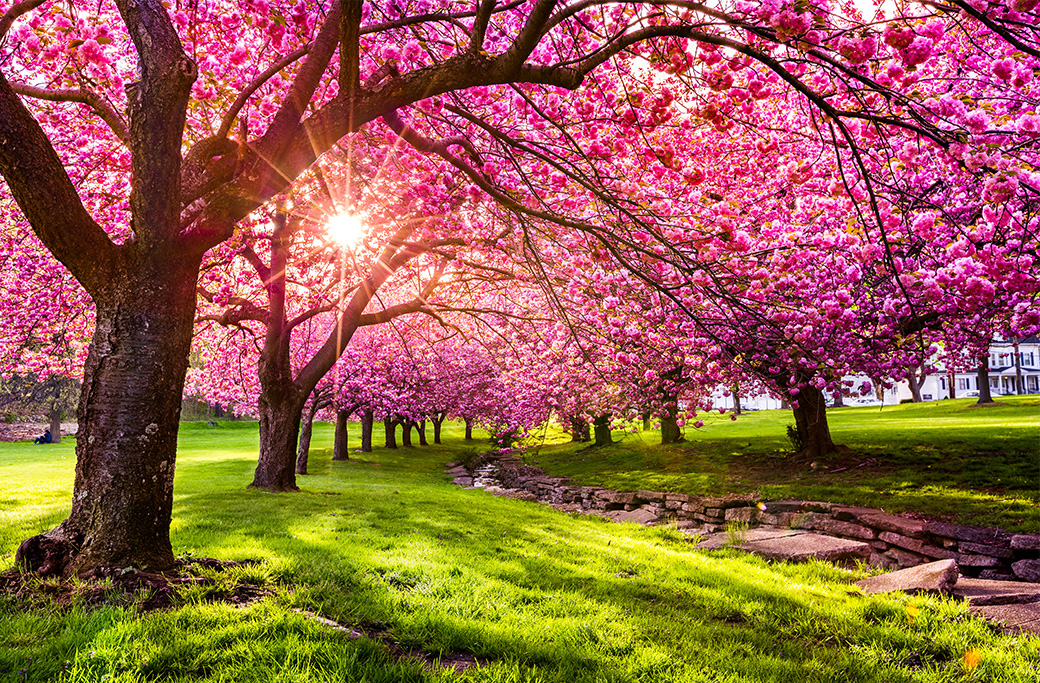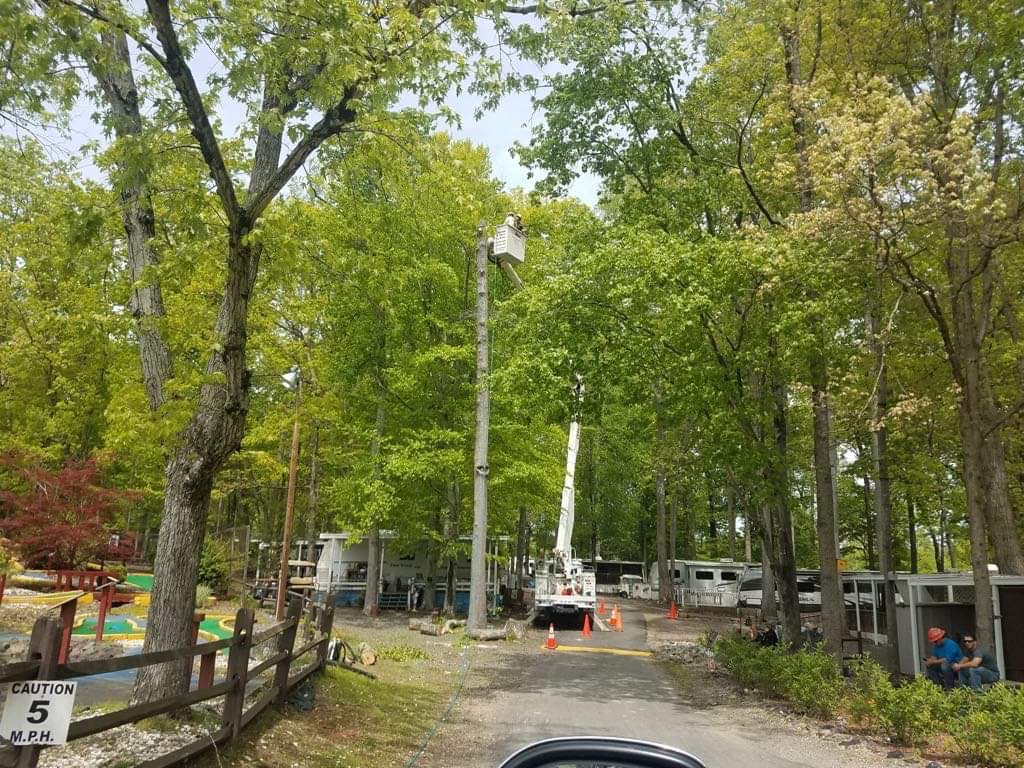Flowering trees are the jewels of a garden and a sure sign that the cold grasp of winter is relinquishing to the warmth of spring. For garden enthusiasts and homeowners alike, these vibrant bursts of color are more than a visual treat – they’re a testament to the cyclical nature of life and the renewal that spring brings. However, for these floral displays to reach their full potential, a little-known secret lies in the science and art of pruning. Pruning can be the key to unlocking the most spectacular array of blossoms on your flowering trees. With guidance from your friends at Shannon & Sons Tree Service, we will discuss the process of pruning and discover how to maximize the beauty of your flowering trees.
The Importance of Flowering Trees in Landscaping
Before we delve into the delicate practice of pruning, it’s essential to recognize the central role that flowering trees play in the aesthetic landscape. These trees bring a natural beauty and delicate fragrance that no other plant can replicate. From the iconic cherry blossoms admired in Japan to the dogwoods and magnolias that accentuate the American South, these bloomers are the stars of any garden. Yet, many are unaware that pruning is the silent hero behind the glamour of these trees. It’s an indispensable tool that ensures your trees maintain health, vitality, and prolific blossom production.
Benefits of Pruning
The benefits of pruning extend beyond the obvious aesthetic improvements. Careful and timely trimming can enhance not only the beauty of the trees’ blooms but also their overall well-being.
Enhanced Flower Production
Pruning stimulates growth by directing a tree’s energy to particular branches. By removing dead or obstructive limbs, you can encourage new, stronger growth that is more conducive to producing blossoms. Moreover, targeted pruning allows for better air circulation and sunlight exposure, leading to a more robust blooming season.
Improved Tree Health
Spring can be a vulnerable time for trees as they recover from winter’s toll. Dead limbs can be a breeding ground for diseases and pests, which can spread to the healthy parts of the tree. Pruning away these potential hazards not only keeps the tree looking tidier but also contributes to its long-term health.
Shape and Structure Control
Proper shaping ensures that the tree grows in a way that’s harmonious with its environment. This is a long-term benefit, as it can prevent the need for more severe pruning down the line. A well-structured tree is more resistant to wind and storm damage, protecting both the tree and any structures around it.
The Pruning Process
Effective pruning is both an art and a science. It involves an understanding of the tree’s growth patterns and a strategic vision for shaping its future. Here’s an in-depth look at how to approach the pruning process.
Timing and Techniques
The timing of pruning depends on the type of tree and its blooming cycle. Generally, it’s best to prune immediately after flowering so you don’t inadvertently trim away next season’s blooms. When making cuts, always do so just outside the branch collar without leaving a stub, which can lead to decay.
Tools and Safety Measures
Good tools are essential for the success and safety of any pruning project. Hand pruners are perfect for small branches, while loppers can handle the thicker ones. For high-reaching limbs, consider a pole pruner or even hiring a professional tree service. Always prioritize safety when pruning. This includes wearing gloves, safety glasses, and knowing the proper ladder and climbing procedures if working on larger trees.
Pruning Tips for Specific Types of Flowering Trees
Different trees have unique needs when it comes to pruning for optimal flowering. Let’s look at some popular varieties and the specific care they require.
Cherry Blossom Trees
Cherry trees, particularly the famous Yoshino variety, require very little pruning for aesthetics and blooming health. The focus should be on removing diseased, dead, or crowded branches. This keeps the tree open and airy, allowing sunlight to reach the inner branches. Avoid aggressive pruning, as this can stress the tree and reduce future blooms.
Dogwood Trees
Dogwoods are more forgiving when it comes to pruning time. They can be shaped and thinned in late winter to give them a good start for spring. Like cherries, dogwoods bloom on last year’s growth, so overzealous trimming can inhibit their spring display. Focus on shaping the tree and removing any dual or crossing branches to keep it healthy and radiant.
Magnolia Trees
Magnolias, with their large, fragrant blooms, need thoughtful pruning to maintain their splendid appearance. Early spring, right after flowering, is a good time to trim them. Remove any dead or damaged growth and improve structure as needed, ensuring that the tree maintains a balanced form. Be cautious with magnolias, as they are sensitive to severe pruning.
Common Mistakes to Avoid
Pruning, when done incorrectly, can damage a tree’s health and reduce its blooming potential. Here are two common mistakes to steer clear of.
Over Pruning: Excessive pruning, especially in young trees, can disrupt their growth patterns and reduce flowering. A general rule to prevent over pruning is to never remove more than 20% of the tree’s foliage in a single season. Always have a clear reason for each cut you make, whether it’s improving shape, removing hazards, or enhancing blooms.
Improper Cuts: Cutting too close to the trunk, leaving a protruding stub, or tearing rather than cleanly cutting the branch can all lead to problems. Improper cuts can create entry points for diseases and insects and slow the tree’s recovery from pruning. Remember to use sharp, clean tools and always cut at the right angle.
How Pruning Enhances Flowering Trees in Spring
The art of pruning is one that requires patience, knowledge, and a love for horticulture. When performed thoughtfully, it can transform a garden, promote blossoms, and preserve the life of a tree. As spring approaches, we encourage garden enthusiasts, homeowners, and landscapers to embrace the practice of pruning. Spring pruning is key to enhancing flowering trees, as it meticulously removes old and spent blooms, encouraging the growth of new buds. This rejuvenation process not only stimulates a richer blooming cycle, but it also allocates the tree’s resources more effectively, ensuring energy is not wasted on parts of the tree that will not contribute to its splendor in the season to come. Additionally, pruning in spring often aligns with the natural growth cycle of many flowering trees, making it the ideal time to shape their future beauty, and helping to guarantee a bountiful and vibrant display year after year. Make the most of spring and let Shannon & Son’s Tree Service help your trees flourish!



